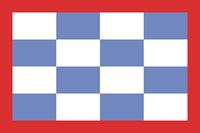History and Art at Fernandina Beach, Amelia Island, Florida
- argold57
- Dec 3, 2023
- 5 min read
From the St. Johns River, we turned North along the ICW to visit Fernandina Beach, a town we were told was "quite walkable" (it is). We anchored in a large and calm anchorage with very little wakes from traffic, the wind was mostly calm, and we found really good holding in 20 feet and a 6 foot tide range. We feel quite secure at anchor. We launched the dingy for the first time since August and went ashore. Within half a block of walking in town, we knew we would spend several days here after meeting David Levy Eulee (1810 - 1886) and the unnamed pirate pictured below.
Of the experiences we most value from this trip is what we are learning about history, local, American, and world. And believe us, what we are learning is NOT the American Mythology we learned in School so many years ago. Nor is it the mythology that SOME in our nation are trying to protect in the interest of "patriotism". In today's lecture (in case you were wondering where we are taking this blog today), we may open our eyes to the fact that when Florida transferred hands from Spain to become an American Territory, it was not all that great for everyone living here. Especially the free African Americans. I will not go into detail, but we hope you follow some of the links below to the figures in history to gain a little more understanding. Share these with others you think might also be interested.
We want to start off with kudus to the Amelia Island Museum of History (they have an excellent web site and a good resource to begin to understand the details that are opening our eyes.)

As we travel and visit many history museums, we find some (and this is one of them) that actually realize that history did not begin with the arrival of the Europeans. We recognize how difficult it is to verify the historical story for cultures where the story is passed down orally (African and Indigenous American included). But that does not mean that the story did not exist, and with inclusion of the people who are still there, a decent story can be told. The story in this area begins with a people of numerous tribes grouped by their common Language, the Timucuans. Most unfortunate is that because of European intervention, these people are no more,. What was left after ... Guns Germs and Steel... arrived were likely subsumed by the Seminole Tribes (we are looking forward to learning more about these people as they did have a pivotal role in this area's history (and maybe the present??). We respect this Museum because, unlike many museums, with a tiny display of arrowheads (or nothing,) Amelia Island recognizes that these people did not simply (conveniently) vanish once the colonizers arrived.
Next we have the story of colonization in this area. The story is fascinating and the town recognizes their 8 flag history (not including, of course any native "flag"). Three flags are of particular interest and worth diving into. Lets go there:
We love to partake in the "Free little Library" system, those little boxes from which people take and leave books. Our role seems to be taking books and moving them southward. We often find books of local interest and admittedly take them out of the area of interest, Perhaps they will eventually find their way back. We passed by one of those boxes on our way to the museum and saw, but did not take a biography of Anna Madgigine Jai Kingsley (1793 - 1870). It is through the lens of her story that we begin to understand the real story of this crucial period of our history and why. It was not so great when America annexed Florida from the Spanish ( (Allen's opinion:) Florida conservatives may rule this part of their own history unteachable because it may foment "unpatriotic" feelings). In a nutshell, Spain had a 3-caste system where freed black people, while still considered a lower caste of people, had rights, where under the American system, there was no third caste; there where only whites and enslaved black people.
Eight Flags over Amelia Island
The 8 flags that flew over Amelia Island are well known to area residents as is apparent on main street. This area was claimed successively by France, Spain, erstwhile "Patriots" secretly backed by President Monroe and the Governor of Georgia in the "other war of 1812.". This destabilized the area enough for a short reign of one of the most notorious scoundrels in all of world history: Gregor MacGregor. I am seeking a good biography of this guy. His story is amazing! And guess what? the bad guy finishes first as he ended his life as a celebrated hero in Venezuela. Not the best telling of the story, but check out the first video in this link. I want to see Eric Larson take up this subject! MacGregor's flag, was the green cross of the Republic of East Florida---a total rehearsal for the next con job by MacGregor. This episode of his life was only a warm-up for what was about to come.
MacGregor's escape left this area in a very weakened state, ripe for the next chapter, represented by the checkered flag of the French-born pirate Louis Aury, who, with the secret backing of a Philadelphia congressman, claimed Amelia Island in the name of Mexican Revolutionaries.

The history of this area has helped open our eyes to the difference between what we learned in school and what actually happened in history, and perhaps through that understanding, understand why things are the way they are today. This brings us back to our friend from the first photo, Davis Levy Yulee, the first Jewish U.S. senator, who was very influential in bringing the railroad to Amelia as well as drafting the Florida State Constitution. The island now supports several heavy industry sites including a cardboard box mill (pictured here), a pulp mill, a seaport and almost a 3M Titanium strip mine (which was never built, the land was purchased to build the Omni Resort here.

So concludes our history lecture. We really enjoyed the town of Fernandina Beach, the shops and restaurants were really nice. We had some great fried shrimp and Cubano sandwiches (and coffee shot) and really enjoyed browsing the antique stores and other shops. These are the good days.
Norma enjoyed the museum also and focused on the Native Americans who first inhabited the area and were decimated by all of the European visitors and conmen. Ultimately, the trade here was slavery, and export of indigo and cotton. If you read any history of our country, you must be aware that the land and peoples living here and brought here were perceived only in terms of the economic benefit of the Europeans. The beauty of the oceanside beaches along the island with its migrating baby turtles, ibises, herons, etc. are secondary to the railroad, still used today to transport mill products and to the huge cruise ships which have made this island their home port. The town is sweet, however, and in nicer weather, a great place to visit to tour old homes, and explore the antique shops and great little restaurants.










It sounds to me as though you are having a better education than you did in school😀
I’m really impressed.
We really enjoyed Fernandino Beach also. This is a really good post. Where to next?